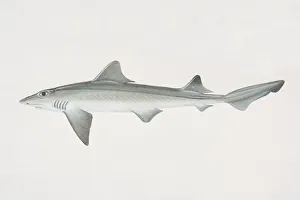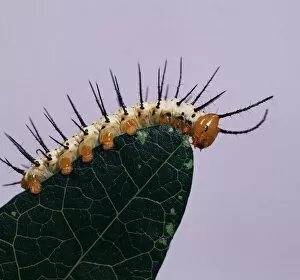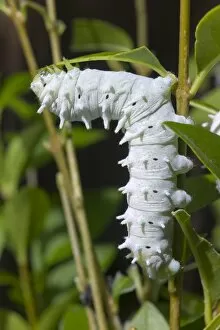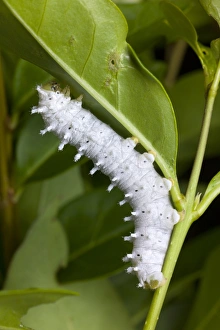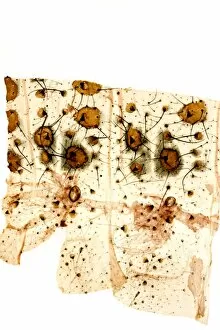Spiracles Collection
"Spiracles: The Hidden Breathing Holes of Nature's Marvels" Discover the fascinating world of spiracles
All Professionally Made to Order for Quick Shipping
"Spiracles: The Hidden Breathing Holes of Nature's Marvels" Discover the fascinating world of spiracles, the tiny respiratory openings that allow various creatures to breathe effortlessly. Take a closer look at these incredible structures and their importance in different species. In the depths of the ocean, Mustelus canis, commonly known as Smooth Dogfish, showcases its side view adorned with spiracles. These specialized gill slits enable them to extract oxygen from water efficiently while gliding through their marine habitat. Similar to fish, insects also possess spiracles for respiration. Witness the caterpillar's remarkable adaptation as it breathes through these holes along its body. From Final instar larva of a silkmoth to Fourth instar Chinese silkmoth larva, these larvae rely on spiracles for survival during their transformative stages. Even in adulthood, some moths like December Moth (Poecilocampa populi) continue relying on their intricate network of pro-legs and spiracles. Observe them up close in Powys, Wales during May - a testament to nature's ingenuity. Zooming into microscopic wonders reveals even more astonishing details about spiracles. Warehouse moth larva captured under SEM showcases its breathing apparatus intricately designed for optimal gas exchange. Not limited to just moths or larvae, fruit flies also possess this ingenious mechanism. Witness how they utilize breathing tubes during pupation and emergence into adulthood through mesmerizing SEM images capturing every minute detail. From light micrographs showcasing caterpillar spiracles and skin texture variations; we delve deeper into understanding how these tiny structures play an essential role in insect life cycles. Spiracles truly exemplify nature's brilliance by providing diverse organisms with efficient respiratory systems tailored specifically for their unique habitats and life stages.

